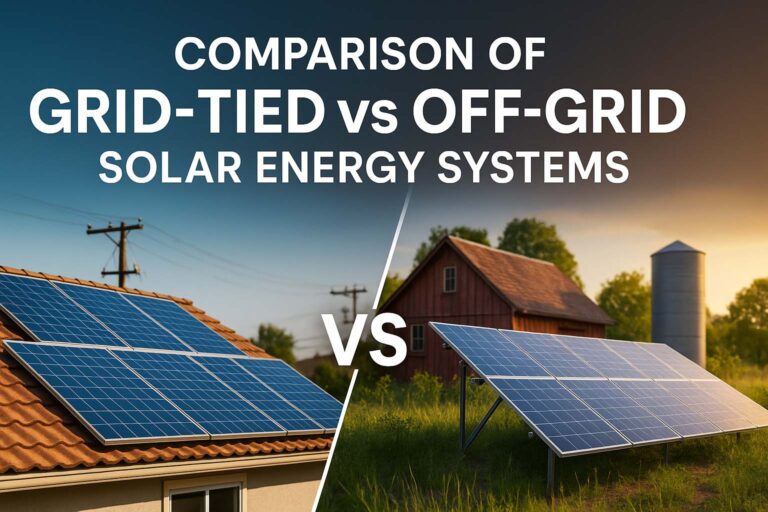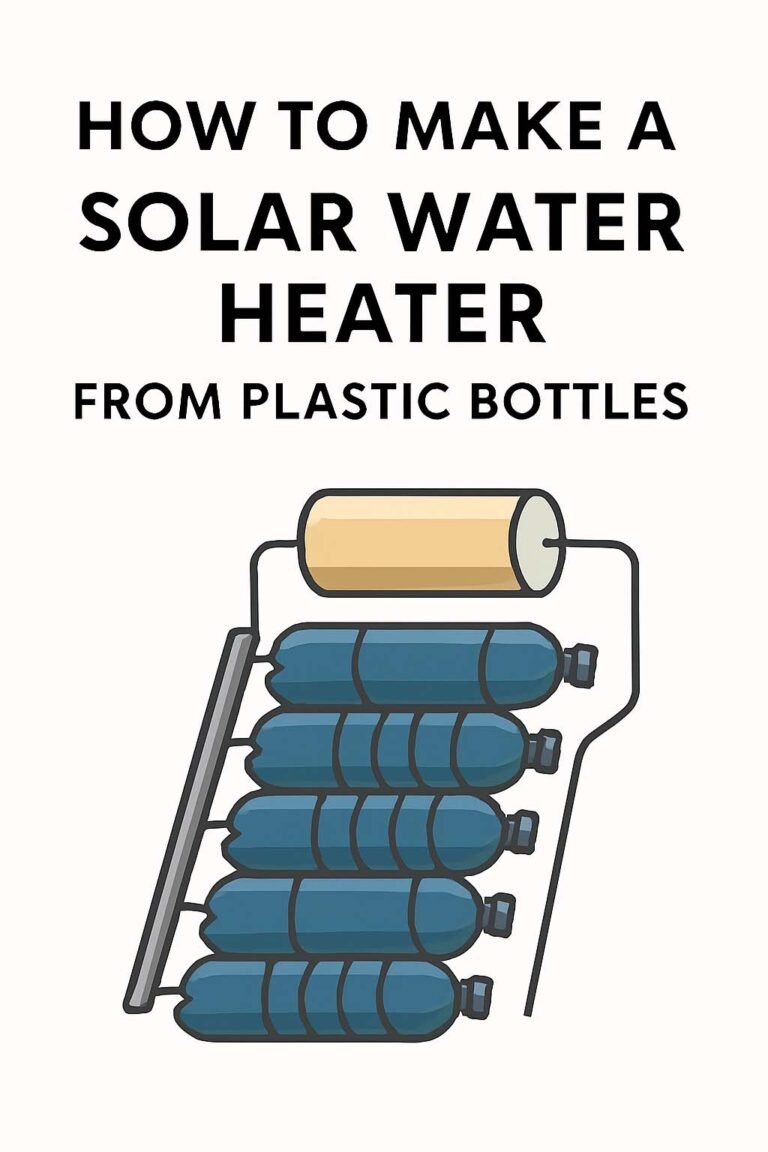Solar Cable Sizing Guide with Voltage Drop Calculations
When designing a solar power system, one of the most overlooked yet critical aspects is cable sizing. Choosing the correct cable size ensures safety, reduces power loss, and improves system efficiency. This Solar Cable Sizing Guide with Voltage Drop Calculations will help you understand everything from cable selection basics to advanced voltage drop considerations, tailored for solar panel installations.
Table of Contents
Table of Contents

Whether you’re installing solar for a home, farm, or commercial site, this guide gives you the technical knowledge to size your solar cables accurately and safely.
Why Cable Sizing is Important in Solar Systems
Correct cable sizing plays a crucial role in solar PV system performance. Undersized cables lead to excessive voltage drop, overheating, power loss, and even potential fire hazards. Oversized cables, on the other hand, increase costs unnecessarily. So, there must be a balance.
For DC systems especially, voltage drops are more noticeable due to lower operating voltages. Hence, cable selection becomes a vital design parameter in both off-grid and grid-tied solar systems.
Know More about Solar System Sizing Calculator for Agriculture & Tubewells
Understanding the Basics Before Sizing Solar Cables
Before diving into formulas and charts, it’s essential to understand key factors that influence cable size:
- Current (Amps): Amount of current flowing through the cable
- Voltage (Volts): System voltage, typically 12V, 24V, 48V DC or 230V, 400V AC
- Cable Length: Longer cable runs increase voltage drop
- Cable Type: Material (Copper or Aluminum), insulation, and cross-section
- Acceptable Voltage Drop: Generally kept under 3% for efficiency
The primary focus of this Solar Cable Sizing Guide with Voltage Drop Calculations is to ensure that power loss remains minimal, particularly when cables run over long distances such as between solar arrays and inverters or combiner boxes.
Cable Material: Copper vs Aluminum
Copper cables have higher conductivity and lower resistance, making them ideal for solar PV installations. However, they are more expensive than aluminum.
| Parameter | Copper | Aluminum |
|---|---|---|
| Conductivity | High (Better) | Medium |
| Cost | Higher | Lower |
| Weight | Heavier | Lighter |
| Corrosion | Less susceptible | Needs protection |
For solar systems, copper cables are the standard choice unless cost and weight become key limitations in large-scale installations.
Know More about Hybrid Solar Inverter Working Principle with Circuit Diagram
Formula for Voltage Drop Calculation
To properly size cables, you need to calculate voltage drop using the following formula:
Voltage Drop (V) = 2 × Length (m) × Current (A) × Resistance (Ω/km) ÷ 1000
- The factor 2 is for round-trip length (there and back).
- Resistance is based on the conductor material and size.
- For AC systems, use 1.732 instead of 2 for three-phase calculations.
You can rearrange this formula to find the appropriate cable size based on acceptable voltage drop limits.
Use our free online tool Voltage Drop Calculator
Maximum Allowable Voltage Drop
Voltage drop limits are typically:
- DC Circuits: 3%
- AC Single-phase: 3–5%
- AC Three-phase: up to 5% in some cases
For example, in a 12V system, 3% is only 0.36V. So, the margin is tight, making cable sizing even more critical in low-voltage systems.
Know More about How to Calculate Solar Plant Efficiency in 5 Steps
Step-by-Step Solar Cable Sizing Guide with Voltage Drop Calculations
Let’s go through a practical method to size solar cables accurately.
Step 1: Calculate Load Current
Use this formula:
Current (A) = Power (W) ÷ Voltage (V)
Example: For a 1000W solar panel string at 24V,
Current = 1000 ÷ 24 = 41.67 A
Step 2: Decide Voltage Drop Tolerance
For a 24V system, 3% of voltage = 0.03 × 24 = 0.72V
Step 3: Measure Cable Length
Let’s say the cable from the panels to inverter is 20 meters one way, then round-trip = 40 meters
Step 4: Choose a Cable Type
Assume copper cable and want to try with 16 mm² size
From standard charts, resistance of 16 mm² copper = 1.21 ohm/km
Step 5: Plug Into the Voltage Drop Formula
Voltage Drop = 2 × 20 × 41.67 × 1.21 ÷ 1000 = 2.02 Volts
That’s more than 3%, so 16 mm² is not acceptable here.
Try 25 mm² cable with resistance = 0.780 ohm/km
New Drop = 2 × 20 × 41.67 × 0.78 ÷ 1000 = 1.30 Volts
Still above 3%. Try next size.
Try 35 mm², resistance = 0.554 ohm/km
Drop = 2 × 20 × 41.67 × 0.554 ÷ 1000 = 0.92 Volts
In a 24V system, this is acceptable (within 3.8%). You may still optimize further based on budget and criticality.
Know More about Short Circuit Calculation Methods: IEC vs ANSI
Recommended Cable Sizes Based on System Voltage
Here’s a simplified reference table based on typical conditions:
| System Voltage | Cable Length (m) | Load Current (A) | Recommended Size (mm²) |
|---|---|---|---|
| 12V DC | 10 | 20 | 10 mm² |
| 24V DC | 20 | 40 | 35 mm² |
| 48V DC | 30 | 60 | 50 mm² |
| 230V AC | 50 | 32 | 6 mm² |
| 400V AC | 100 | 63 | 25 mm² |
Note: Always cross-verify with exact resistance values from manufacturer datasheets.
Use our free online tool for wiring size calculation Wire Size Calculator
Derating Factors in Solar Cable Sizing
Temperature, cable bundling, and installation method can affect cable capacity. Derating must be considered during final sizing:
- Ambient Temperature: Higher temps reduce current capacity
- Underground Cabling: May require upsizing
- Multiple Cables in Conduit: Needs derating due to heat buildup
Always consult IEC 60287 or NEC Table 310 for appropriate derating charts.
Solar Cable Selection Tips
- Always prefer UV-resistant solar-grade cables for outdoor use
- Ensure cable insulation supports system voltage (e.g., 600V/1000V rated)
- Choose double insulated solar DC cables (e.g., PV1-F, EN 50618 compliant)
- Use color-coded cables for easy polarity identification
Know More about Transformer Cooling Methods: ONAN, ONAF, OFAF & More
Voltage Drop in AC vs DC Systems
In DC systems, both wires carry current, so full round-trip is considered in voltage drop.
In AC, especially three-phase, only one way is calculated with a multiplier of √3.
DC systems are more sensitive to voltage drop. For longer runs, especially with 12V or 24V systems, cable sizing becomes more challenging.
Real-World Example: Solar Water Pump Cable Sizing
Imagine a 5kW solar water pump system running at 48V DC over 30 meters.
The current = 5000 ÷ 48 = 104.2 A
Using our formula:
Try 50 mm² copper (R = 0.386 ohm/km)
Drop = 2 × 30 × 104.2 × 0.386 ÷ 1000 = 2.41 Volts
That’s a 5% drop. Not acceptable.
Try 70 mm² copper (R = 0.268 ohm/km)
Drop = 2 × 30 × 104.2 × 0.268 ÷ 1000 = 1.67V = 3.48%, acceptable with margin.
Final choice = 70 mm² cable for 5kW pump at 48V DC over 30m
Conclusion
This Solar Cable Sizing Guide with Voltage Drop Calculations emphasizes why accurate cable selection is essential for safe and efficient solar power systems. Whether you’re dealing with DC or AC circuits, proper cable sizing ensures minimal power loss, avoids equipment damage, and complies with electrical standards.
Always calculate expected voltage drops, compare with allowable limits, and choose cables based on system load, length, and environmental factors. For best results, combine theoretical calculations with practical considerations such as cable routing, site conditions, and cost.
Follow Us on Social:
Subscribe our Newsletter on Electrical Insights to get the latest updates in Electrical Engineering.
#SolarCableSizing, #VoltageDropCalculations, #SolarInstallationTips, #SolarPowerSystem, #RenewableEnergyGuide, #SolarEngineering, #CableSizingGuide, #OffGridSolar, #SolarEnergySolutions, #ElectricalDesign, #SolarInstallerHelp, #GreenEnergyTech, #PhotovoltaicSystems, #SolarWiringBasics, #EnergyEfficiencyTips





